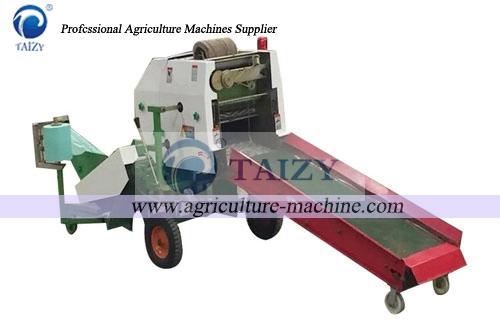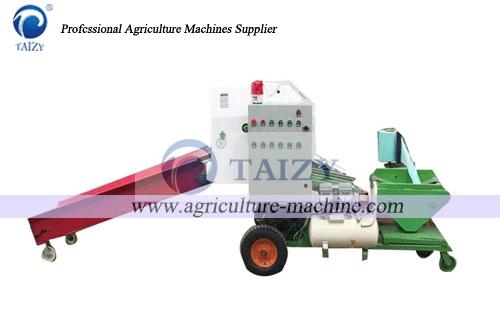Automatic silage balers must create good conditions for lactic acid bacteria when making silage so that lactic acid bacteria can grow and multiply rapidly. Conditions conducive to the growth and reproduction of lactic acid bacteria are: silage materials should have fixed sugar content, suitable water content and an anaerobic environment. These aspects are also factors that affect the quality of silage. First, the sugar content of silage raw materials
When using corn stalk balers to make silage, in order to ensure a large number of lactic acid bacteria in the feed, a sufficient amount of lactic acid is produced, so there must be a sufficient amount of soluble sugar in the silage material. If there is little soluble sugar in the raw material, it cannot be made into high-quality silage even if other conditions are available.
The protein and alkaline elements in the silage material neutralize part of the lactic acid, and the microbial activity can be inhibited only when the pH value of the silage material is 4.2. Therefore, lactic acid bacteria form lactic acid, so that the sugar content of the raw material required at a pH of 4.2 is an important condition, which is usually called the minimum required sugar content.
The actual sugar content in the raw material is greater than the minimum sugar content, that is, the positive silage sugar is poor; on the contrary, when the actual sugar content of the raw material is less than the minimum sugar content, the negative silage sugar is poor. Any silage raw material is easy to silage when the positive silage is poor, and the larger the positive number, the easier it is to silage; the raw material is negative silage, the difference is difficult to silage, and the greater the difference, the less easy to silage.


In general, grass crops and pastures have high sugar content and are easy to silage; legume feed crops and pastures have low sugar content and are not easy to silage.
According to the poor silage of feed, silage raw materials can be divided into three categories:
(1) Raw materials that are easy to silage. Such as corn, sorghum, grasses, sweet potato vines, pumpkin, Jerusalem artichoke, phthalocyanine, cabbage, etc., such feed contains moderate or more easily soluble carbohydrates. It has large positive silage.
(2) Raw materials that are not easy to silage. Such as the first sorghum, clover grass, soybeans, peas, milk vetch, potato stems, and leaves, etc., containing fewer carbohydrates, are negative silage sugar, should be mixed with the first type of storage, or add silage fermentation inhibitors to prepare special silage.
(3) Raw materials that cannot be silaged separately. Such as pumpkin tomb, watermelon mo and so on. These plants have extremely low sugar content, and silage alone is not easy to be successful. It can only be mixed with other materials that are easy to store silage or add carbohydrates such as bran, hay powder, etc., or with acid silage.
